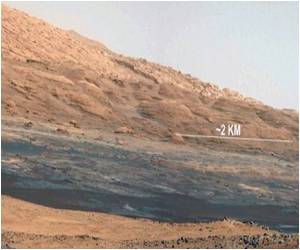
Assuming that such technologies are established at the time of a mission to Mars, the MIT team has found that taking a detour to the moon to refuel would reduce the mass considerably.
According to Olivier de Weck, professor of aeronautics at MIT, their plan deviates from NASA's more direct "carry-along" route.
"This is completely against the established common wisdom of how to go to Mars, which is a straight shot to Mars, carry everything with you," de Weck noted.
"The idea of taking a detour into the lunar system ...it's very un-intuitive. But from an optimal network and big-picture view, this could be very affordable in the long term, because you don't have to ship everything from Earth," he explained.
The group has developed a model to determine the best route to Mars, assuming the availability of resources and fuel-generating infrastructure on the moon.
Advertisement
They found the most mass-efficient path involves launching a crew from Earth with just enough fuel to get into orbit around the Earth.
Advertisement
The tankers would eventually be picked up by the Mars-bound crew, which would then head to a nearby fueling station to gas up before ultimately heading to Mars.
To make this happen, water ice -- which could potentially be mined and processed into rocket fuel -- has been found on both Mars and the moon.
"There's a pretty high degree of confidence that these resources are available," de Weck added.
"Assuming you can extract these resources, what do you do with it? Almost nobody has looked at that question," he pointed out.
The new mathematical model improves on a conventional model for routing vehicles.
"We adapted the model for the more complex scenario of long-term missions in space -- taking into account constraints specific to space travel," said Takuto Ishimatsu, now a post-doc at MIT.
The model assumes a future scenario in which fuel can be processed on, and transported from, the moon to rendezvous points in space.
"Our ultimate goal is to colonize Mars and to establish a permanent, self-sustainable human presence there," Ishimatsu emphasized.
"However, equally importantly, I believe that we need to 'pave a road' in space so that we can travel between planetary bodies in an affordable way," he noted.
The results were published in the Journal of Spacecraft and Rockets.
Source-IANS









